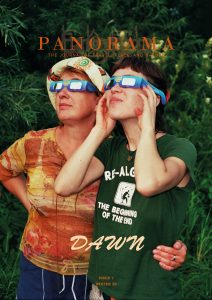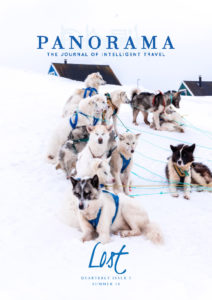A journalist, a real estate advisor, an interior decorator, a writer, and a business woman – we are all mothers. We are all on a mission: to hike Mount Kilimanjaro for mothers in need of neonatal care.
We start on a dusty gravel path from the Nale Moru village near the Kenyan border, the only route from the north side of the mountain. The sun is gently accompanied by a cool breeze.
I pull a quick-fix hijab over my head. No pins, no knots to tie. This is the best hijab for hiking. On a normal day, I would use at least 4 pins; draping it for an elegant look would require even more. The hijab on my head is an integral part of my identity. When a friend at my university asked me, ‘Why do you have to wear that?’ I came to a crossroad, and I followed my heart. It was a drastic step on my side, because it meant I had to play the part of a good Muslim.
Raised in Dar Es Salaam, Tanzania, I had the rare opportunity to complete a Bachelors and a Masters in Psychology in London. I wanted to unravel the intricacies of the mind and behavior, and to get a better understanding of the world around me. I wanted insight into the minds of people, but after I graduated I chose to leave my career as a psychologist and fly to a foreign land where I didn’t understand a word: I moved to Cairo for five years to learn Arabic, to understand the mysteries of the Quran in the language it was revealed. Today, I wear my hijab proudly like Mary, the mother of Jesus, wore hers.
The porters are busy offloading duffle bags from the bus, covering them in huge plastic, waterproof gear and weighing them as we start at a slow pace, full of energy and smiles. This routine check is to make sure that there are no excess kilos and that no one is carrying plastic and recyclable bottles into the park.
I decide not to take Diamox to prevent altitude sickness. I don’t want to burden my kidneys with more medication. The others swallow the tablet, believing it will help them.
There’s no way you will reach the summit, a guide told me twenty years ago when I attempted to surmount Mount Kilimanjaro for the first time. I was nineteen years old then, standing in my tennis shoes, a jacket tied around my waist, hair tied back in a ponytail, and a feisty attitude. “I’ll be fine,” I responded, taking the challenge. Now, in my forties, back in this familiar terrain, in the land of the Chagga people, wearing a headscarf and hypothyroidism, I attempt Kili yet again.
The doctor who diagnosed me with hypothyroidism echoed the guide twenty years before: “Don’t be disappointed if you don’t make it to the peak.”
In anticipation of my pending climb, I did a blood test to see how good my lungs and oxygen levels are. I was shocked to discover the changes my body is going through. No wonder I feel cold all the time. The deficiency in thyroid hormone increases sensitivity to cold temperatures, which means I can feel cold even in a warm environment. “Will I manage in the higher altitudes?”
And then I remember from a group of 12, I was the only one to summit: “See, I managed with my trainers, didn’t I?”
I trained by increasing my cycling distance, kickboxing and swimming.
“Jambo!” children wearing worn clothes from the local village greet us, their hands stretched out, expecting some kind of gift they are accustomed to receiving from tourists.
“Mzungu!, Mzungu!”they persist, assuming everyone climbing the mountain is white. They do not differentiate between the shades. As long as the climber does not look like them, he or she will be most probably be called that. My hand reaches the zip of my snack bag and I hand out some crisps. The children scuttle away to find a spot to sit in and enjoy the treasure they hold in their hands.
The winding path leads into a pine forest, with tall Cypress trees reaching for the sky. The distance between the trees appear symmetrical, and the forest stretches on and on. My only worry is meeting a wild animal, such as one of the elusive leopards that are still found on the mountain slopes.
“Look, over there!” I hear someone say, pointing towards the top of the trees.
A black and white monkey, making grunting noises, jumps from one branch to another. “A Colobus monkey! How beautiful!” I move slowly towards the tree, aiming my 18-250mm Sigma lens at it, trying to get a good picture. The monkey, small in size, with white hair on its face and black all over doesn’t give me the pose I want from it. Its tail is extremely long and elegant; one of the most beautiful I have ever seen, with a white tuft. I am not entirely happy with the shot, but there is no time as the guide urges us to move.
We reach the first cave, which is about 2600 metres above sea level, just before sunset. I imagined our tents would be set up in a huge cave.
“No one is allowed to erect their tents in there,’ the guide explains. I never ask him why.
The tents are already set up at the camp when we arrive. I pick one, flinging my daypack into it. I remove my heavy hiking boots and lay down on the thin mattress. It feels great to lie down and rest. The others share tents, but I prefer to be by myself – more space for me to sort out things in my bag and in my journey of life. I proudly tie my solar lamp on the top part of the tent. Good solar lamps become the envy high up in the mountains. Within a few minutes, I hear a bell and see the chef smile.
“Tea is ready” he says. “Please go to the dining room.”
The dining room is a bigger tent, where a table with chairs is laid out. Two big red thermoses are in the middle, one filled with hot water and another with hot milk. Tea bags, coffee sachets, a bowl of sugar, margarine and some slices of bread are neatly set out. The evening is chilly and the tea gives some warmth to our bodies. “You can go and rest now until dinner,” the guide instructs us.
Two hours later, with our head torches on and an additional layer to keep us warm, we head back to the dining room where dinner is served: potato soup, boiled potatoes, fried strips of meat and vegetable stew. The carrots are tender and the buttery potatoes melt in my mouth. The chef that came along does a great job of feeding us enough carbs and proteins. The soups and stews keep us warm in the chilly weather. I can’t believe how good the food tastes; I was expecting bland and boring food. The porters carry fruits with them. The soft ripe flesh of the perfectly cut mango cubes, at 4000 metres altitude, makes us realize how much effort the cook is putting in to make us feel at home.
The hike is more rigorous the following day, and it becomes more and more with each passing day. I am coping well despite my hypothyrodism. Dry skin, no makeup and wrinkly clothes are signs of our fatigue.
The air is chilly. The mist limits our vision. The ground is moist.
Our guide points out buffalo and wild pig tracks. He willingly shares his knowledge after he figures out what a curious bunch we are.
We pass by many species of plants.
“What is that beautiful cactus looking plant?” I ask.
“It’s the Lobelia deckenii. The only species of lobelia that lives on Kilimanjaro.”
When I think of a cactus plant, I don’t usually describe it as elegant. But the Lobelia deckenii is exactly that. It has multiple rosettes, provides sustenance, and stores water.
At about 4000 meters above sea level, I learn that life is about coping and adapting, just like this plant, which grows in a zone where it has to survive, and cleverly stores water to help itself and also provide for others.
We head towards the school hut, which is used by many trekkers as a point of rest before heading towards the summit. There are no trees or shrubs to protect us against the chilly wind, just rocks. The terrain has dramatically changed from the forest and moorland zone. It is flat, dry and exposed, with occasional big boulders as a backdrop. In the distance, we see a frozen buffalo. The cold preserved it well; from where we gaze, it looks alive, still standing upright.
“It must have gotten stuck when it came looking for grass,” our guide explains.
If the mountain could take down a buffalo, does it mean the mountain could devour us too?
I spot small white flowers swaying to the wind. Despite the barren landscape in a semi-desert zone, between 4000 and 5000 metres above sea level, they bloom beautifully between moss and thistles. I am amazed at the willpower of the“Everlasting.” I can sense the flowers’ determination to bloom and survive in extreme conditions.
I take a lesson from Everlasting, to aim high no matter how badly I am judged. I will always try to bloom. I will grow in this desert-garden giving hope to those who have lost it in this harsh environment, with its relentless weather. I will not allow any weeds to block my growth.
Kibo Hut is the last place of rest before the actual climb towards the peak. “You need to rest,” he puts emphasis on need. My heart skips a few beats. Then it goes warm before the cold penetrates my limbs.
At 4700 metres, on the trek between Kibo Hut and Gilmans Point, an unexpected blizzard, accompanied by thunderstorm and lightning, raises doubts amongst the strongest in the team. I use my umbrella to keep the snow off, but the wind it too strong and I struggle to hold it.
Sporty Spice tries to convince us to delay the climb. Dora is exhausted. Diego is still battling with her tummy bug. Jamson’s head is throbbing and I shudder as the cold seeps in my bones, despite the many layers.
Should we wait till the storm passes? Should we dare walk through it?
As a team, we decide that we will walk through it and achieve our goal.
Still shivering, I fold my umbrella away. It takes too much of my energy to hold it. The air is bitterly cold and thin. Exerting myself, I ignore the numbness that engulfs my body. I focus on breathing. I pant and puff, then stop and sigh. My throat freezes along with my lungs when I inhale deeply. I cover my mouth with the balaclava to avoid the piercing air from entering my insides. With an extra 10 kilos of clothes, from base layer to the middle thermals and the thick jacket, I can feel the effort in every step. My lungs feel the struggle as well.
You can’t turn back Nahida. You have to get to the finish line.
A few sips of an energy drink I saved for this last patch help me not to fall asleep from over exhaustion. My head is throbbing. It is the altitude. I am the only one that didn’t take Diamox. My inner voice laments “You should have taken it.” I tell myself, “You will be fine, just take one step after another and don’t stop.”
I hear a mantra in the background: “Pole! Pole!”
I keep going until I reach the peak.
Despite our different levels of fitness, we encouraged each other to go on.
“We did it girls!” I say loudly, but my voice sounds more like a squeak. I utter the words more for myself to hear and acknowledge.
“You can’t stay for long, girls,” the guide cautions us. At such a high altitude and below zero degrees, we take a group picture quickly with our banner, and within 10 minutes, we start our very difficult downward journey.
A thousand thoughts cross my mind at the peak. Tears fail to trickle in the frost. My inner doubts disappear. My heart screams and shouts to the world, “I am invincible!” The echo reaches my ears and stops. The sun is out and everything on the ground and surrounding area glows, a special white glow.
Falling on my knees to the ground, I grasp a handful of snow and sigh, “Thank you God!”
I wish my daughters could see how my heart yearns for them to feel the same way. How the broken pieces attract other broken pieces and bond, making way to new, wholesome, layers.











